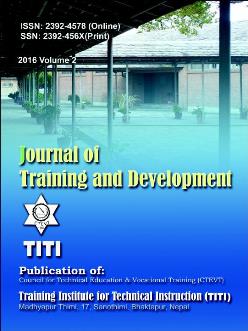Understanding Gender Neutral language at workplace: Study of TEVT schools of Nepal
DOI:
https://doi.org/10.3126/jtd.v2i0.15433Keywords:
Gender neutral language, discrimination, instructors and communicationAbstract
This study tries to understand how female instructors perceive use of gender neutral language in the workplace. Traditionally there had been stratification in male and female on the basis of work and also on the basis of language; but lately, a number of efforts have been made to remove stratification on the basis of gender. Still many reports argue that there is bias on the basis of gender language in the workplaces. The traditionally built stereotype on job roles of males and females given by the society people may not support and go in line with the practice of using gender neutral language. Therefore, this paper had aimed to explore the use of gender neutral language in technical schools of Nepal. To begin the study, eight female instructors from different technical schools of Nepal with different occupations were purposively selected. A case study research design was implied to understand the perception of female instruction with regards to gender neutral language in their work place.
Downloads
Downloads
Published
How to Cite
Issue
Section
License
Authors who publish with this journal agree to the following terms:
- Authors retain copyright and grant the journal right of first publication with the work simultaneously licensed under a Creative Commons Attribution License that allows others to share the work with an acknowledgement of the work's authorship and initial publication in this journal.
- Authors are able to enter into separate, additional contractual arrangements for the non-exclusive distribution of the journal's published version of the work (e.g., post it to an institutional repository or publish it in a book), with an acknowledgement of its initial publication in this journal.
- Authors are permitted and encouraged to post their work online (e.g., in institutional repositories or on their website) prior to and during the submission process, as it can lead to productive exchanges, as well as earlier and greater citation of published work (See The Effect of Open Access).




